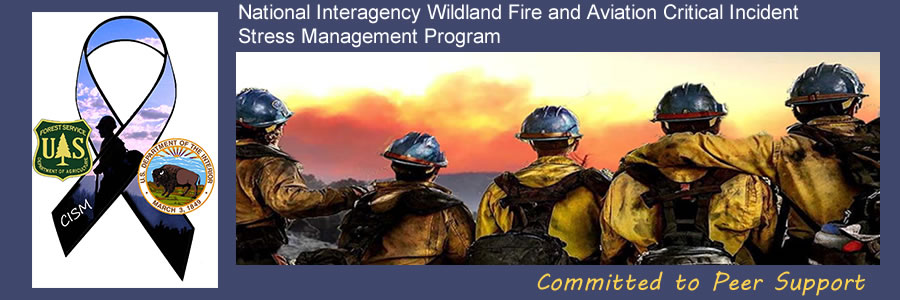Main Print Heading
Print Subheading
CISM and the Role of Managers and Leaders
"The demonstration of caring is more important than all other leadership traits combined"...Bruce T. Blythe
Ultimately, strategic crisis management is about managing the reactions of people. Whether the crisis involves multiple deaths or injuries or "only" involves a perceived injustice or negligence, the steps you take will be to manage people's reactions (Blythe, 2016). Caring during crisis response is not a feeling. Caring is a set of corporate and personal behaviors that elicit the perception that you and your organization honestly care.
Most people have the resources and skills to cope with traumatic events over time (3 to 12 months). However, that does not mean we should not respond to individuals who would benefit from psychological support. One of the challenges for leaders is that it is difficult to know what individuals could benefit from additional resources. The number of traumatic exposures and the strain of pre-event life stressors contribute to the range of individual reactions. Traumatic events are one source of "stress injuries" to personnel.

Individuals experience critical incidents in different ways and vary in their reactions to similar events. What may be traumatic for one may not be for others. It is not possible to make rigid recommendations for all situations and employees. Clearly defined practices for managing incidents, clear guidance on dealing with the immediate aftermath of an incident, and longer-term support for employees are vital. These approaches, adapted to different organizational needs, will lessen adverse effects on individuals and the organization as a whole.
Resources and Support From the Wildland Fire Community
The wildland fire and aviation community have strengths and resources that may buffer the impact of critical events. Training, engaged leadership, crew/unit cohesion, and a purposeful mission are essential factors that strengthen personnel and mitigate the effects of operational stress and critical incidents. The close-knit community and the cohesion of the wildland fire community is a protective factor.

It is important to remember that managers are part of that community and will experience critical events on both an individual and leadership/management level.
Promoting Behavioral Wellness
The concept of "Situational Awareness" is a recognized concept within the wildland fire and aviation community. That is, maintaining a heightened level of awareness relative to our surroundings and those we engage. The same principle can be applied to the behavioral wellness of fellow firefighters and others. Ultimately people want to know that someone cares about their well-being and that someone is checking on them. For a leader within our agencies, an ultimate goal is now focusing on the development of an organizational culture where behavioral wellness is as important as strong firefighting skills.

Just as training programs intend to enable firefighters to perform professionally on the line, behavioral wellness is beginning to receive the same level of expectation. Training personnel within all disciplines of our agencies in using positive coping mechanisms to handle stress and the ability to recognize a co-worker is in distress should receive the same priority as firefighting skills due to the growing concern about our ability to maintain wellness and resilience.
Resources for Managers
- Agency Administrator's Briefing
-
Managers Guide to Suicide Intervention
- The First 48-72 Hours
- Crisis Leadership
- Reactions After a Critical Incident
- Placing a Request for CISM
- Helping Employees After a Traumatic Event
- Pre-Incident Planning
- Loss of a Coworker
Psychological Intervention (CISM)
The myth that researchers found that CISM is potentially harmful to responders was an odd conclusion of a review of several studies that gave “psychological debriefings” to victims of auto collisions, burns, dog bites, and other accidents. The studies were inconclusive, but they are irrelevant to CISM and responders even if they had demonstrated potential harm.
- The interventions were inconsistent; ICISF CISM protocols were not followed.
- No responders were involved – the care receivers were medical patients, victims of burns, accidents, etc.
- All of the interventions were with individuals, rather than groups.
Another myth is that the intent of debriefings (which are just one component of a CISM system) is to reduce or prevent Post-Traumatic Stress Disorder. Although debriefings may contribute to that goal, the intent is to help a team “bounce back” from a difficult incident. Their explicit goals are:
- Mitigation of the impact of a traumatic event.
- Facilitation of the normal recovery processes and a restoration of adaptive functions in psychologically healthy people who are distressed by an unusually disturbing event.
- A [debriefing] functions as a screening opportunity to identify group members who might benefit from additional support services or a referral for professional care.
Evidence of many benefits of CISM is documented in the scientific literature. Stress-related symptoms drop, such as depression, anger, and anxiety, along with a reduction in substance abuse. Self-esteem and emotional well-being may increase. Recipients are more cooperative with treatment and care, and suicide rates may decrease. More research is needed as CISM has become a primary resource for many emergency responders.
Additional Information
International Critical Incident Stress Foundation
National Alliance on Mental Illness
American Telepsychology Association
 » Read More
» Read More
Agency CISM Information
- Bureau of Indian Affairs
- Bureau of Land Management
- U.S. Fish and Wildlife Service
- U.S. Forest Service
- National Park Service
- Southwest Geographic Area
- State Agencies


